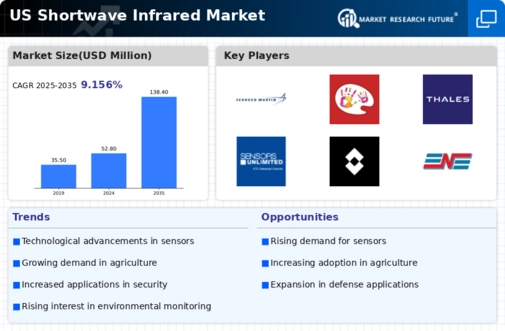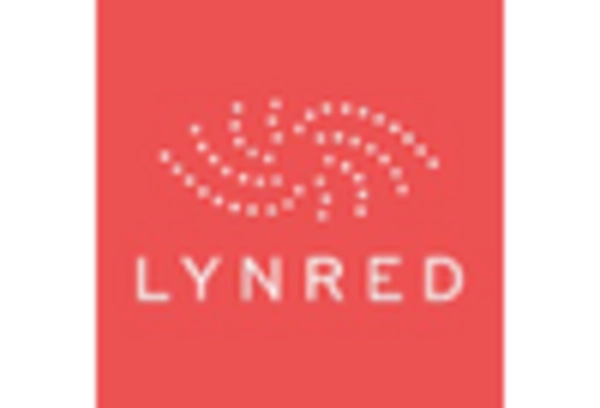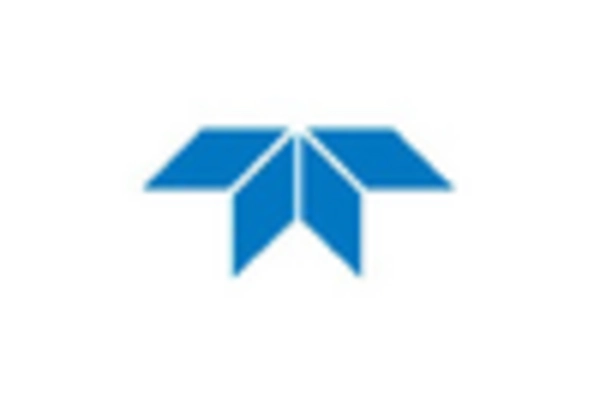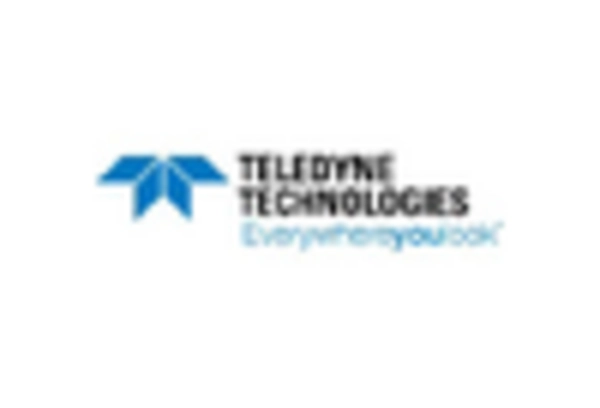The shortwave infrared market is currently characterized by a dynamic competitive landscape, driven by technological advancements and increasing applications across various sectors, including industrial, medical, and environmental monitoring. Key players such as FLIR Systems (US), Teledyne Technologies (US), and Sensors Unlimited (US) are strategically positioned to leverage innovation and expand their market presence. FLIR Systems (US) focuses on enhancing its product portfolio through continuous R&D, while Teledyne Technologies (US) emphasizes strategic acquisitions to bolster its technological capabilities. Sensors Unlimited (US) appears to be concentrating on niche applications, which may provide them with a competitive edge in specialized markets. Collectively, these strategies contribute to a moderately fragmented market structure, where competition is intensifying as companies seek to differentiate themselves through advanced technology and customer-centric solutions.
In terms of business tactics, companies are increasingly localizing manufacturing and optimizing supply chains to enhance operational efficiency and reduce costs. The competitive structure of the market is moderately fragmented, with several players vying for market share. This fragmentation allows for a diverse range of products and services, catering to various customer needs. The influence of key players is significant, as their strategic initiatives often set the tone for market trends and customer expectations.
In October 2025, FLIR Systems (US) announced the launch of a new line of shortwave infrared cameras designed for industrial applications, which is expected to enhance their competitive positioning. This move not only showcases their commitment to innovation but also addresses the growing demand for high-performance imaging solutions in industrial settings. By focusing on this segment, FLIR Systems (US) may capture a larger share of the market, particularly among manufacturers seeking advanced monitoring solutions.
In September 2025, Teledyne Technologies (US) completed the acquisition of a leading sensor technology firm, which is anticipated to strengthen its capabilities in shortwave infrared technology. This acquisition aligns with Teledyne's strategy to integrate advanced technologies into its product offerings, potentially leading to enhanced performance and new applications. Such strategic moves indicate a trend towards consolidation in the market, as companies seek to enhance their technological prowess and market reach.
In August 2025, Sensors Unlimited (US) entered into a partnership with a prominent research institution to develop next-generation shortwave infrared sensors. This collaboration is likely to accelerate innovation and position Sensors Unlimited (US) at the forefront of emerging technologies. By aligning with academic research, the company may gain access to cutting-edge developments that could translate into competitive advantages in the market.
As of November 2025, current competitive trends are increasingly defined by digitalization, sustainability, and the integration of artificial intelligence (AI) into product offerings. Strategic alliances are becoming more prevalent, as companies recognize the value of collaboration in driving innovation and expanding market reach. Looking ahead, competitive differentiation is expected to evolve, with a shift from price-based competition towards a focus on technological innovation, reliability in supply chains, and sustainable practices. This evolution suggests that companies that prioritize R&D and strategic partnerships will likely emerge as leaders in the shortwave infrared market.
















Leave a Comment